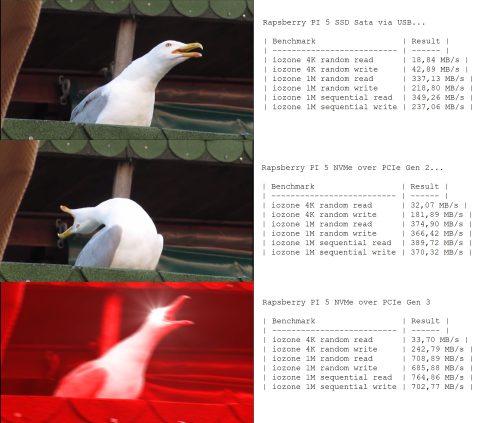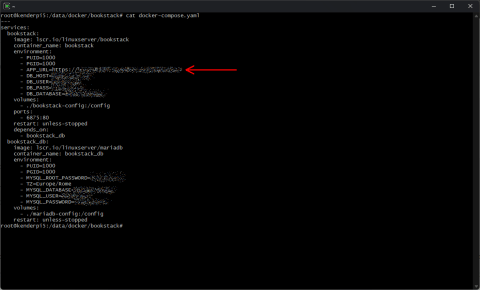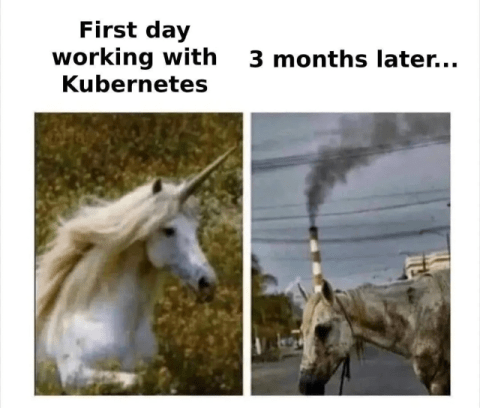08/03/2025
New Nagios project
I love Nagios, It’s the first monitoring service I started using and I loved it since the beginning.
I love it because no matter people say it’s simple, it’s reliable, it’s predictable, it’s simple to reproduce every check Nagios is doing and check yourself the results.
During the years I tried several other software, but I always found them inferior to Nagios, they were too bulky, too chaotic and too disorganized.
Since last autumn I finally was able to get back to my good old Nagios at work, I upgraded it, and I expand it to check new services, check the old ones in a better way and make the setup easier and easier.
I would like to start a new project to share how I use it, which checks I do, and hopefully show someone that the good old Nagios still has some arrows to shoot :)
Let’s start with a check I love and I never found in any other monitoring software: check_reboot_required
This check warns you if there’s a new kernel on you GNU/Linux machine that requires a reboot, it basically extract the running kernel version and the last kernel installed on the server, if they don’t match and the running kernel is older it turns on a warning alert, very simple and very effective to keep your server updated and secure.
Obviously this check is very important if you constantly run automatic updates (via yum-cron, dnf-automatic or unattended upgrades).
The check was written by Johan Ryberg and you can find it in his Github repo, It works perfectly fine on any RedHat based distribution and also on any Debian based distribution, I suggested a small change to make it works with Amazon Linux 2 also.
To use it you only have to
1. place the check_reboot_required file on the server you want to monitor in the Nagios plugins directory (/var/lib64/nagios/plugins on RHEL based distributions or /var/lib/nagios/plugins on Debian based distributions)
2. add this simple command to the nrpe config file (/etc/nagios/nrpe.conf) and restart the nrpe service.
command[check_reboot]=<NAGIOS PLUGINS PATH>/check_reboot_required -s $ARG1$
3. add the “Reboot required” service to your host in the Nagios server configuration
define service{
use generic-service
host_name server.domain.tld
service_description Reboot required
check_command check_nrpe!check_reboot!w
}
4. restart Nagios and enjoy
23/11/2024
Centos 8 multiple httpd instances
This is an old post I had in draft since… I don’t know, maybe years.
Anyway, CentOS 8 is old and out of support, but still I think running several instances of Apache httpd server through systemd can be useful today in other modern Linux distributions, so I think it’s time to clean up the drafts and publish it.
—————————————————
Recently a customer asked me to setup a webdav access to a vm to change some files inside a couple of java web applications deployed on a Tomcat instance.
My first choice was to configure the webdav servlet already available with Tomcat, which sounds like a nice and elegant solution, but that went wrong because webdav http methods were blocked by some Spring waf protection, and change the java applications for that was not an option (for various reasons I will not explain but not technical ones).
At this point I thought to create a new virtualhost for the webdav access, but in that case file ownership would be a problem, and running the frontend webserver with write permission on all the applications resouces was not a good idea.
The solution was simple, setup a new webserver running as tomcat user (Tomcat file owner) on a different port (and also only available on lan) but I found no documentation with some of the latest distros using systemd.
Yes I know, I could install nginx or another webserver, but running a new Apache configuration felt much more elegant to me.
First of all, create a new httpd systemd unit copying the old one with a new name
cp -v /usr/lib/systemd/system/httpd.service /usr/lib/systemd/system/httpd-dav.service
Copy the main httpd config file for the new webserver
cp -v /etc/httpd/conf/httpd.conf /etc/httpd/conf/httpd-dav.conf
Enable the new systemd unit to start at boot
systemctl enable httpd-dav.service
To check if it’s ok run this
systemctl list-unit-files | grep httpd-dav
Now you must edit the new systemd unit to use the new httpd-dav.conf file
systemctl edit httpd-dav.service
…and add this
[Service] Environment=OPTIONS="-f /etc/httpd/conf/httpd-dav.conf"
Now you must edit the new httpd-dav.conf changing some basic directives to not overlap the main Apache configuration:
In my case I changed Listen PidFile, User, Group, ErrorLog, CustomLog, I removed “IncludeOptional conf.d/*.conf” and added a new virtualhost with mod_dav active, basic authentication, etc etc…
Adjust your Apache configurations as you need, but at least you have to change the Listen and PidFile directives to avoid conflicts with the other httpd process.
When you’re ready you only have to start it with
systemctd start httpd-dav.service
I hope this can be helpful.
27/10/2024
Change Bookstack url and context
I love Bookstack, actually I think it’s one of the best wiki project existing.
It’s well documented, it works like charm, the developer is very active (and he’s also a very kind person, which has nothing to do with the software, but it’s always a pleasure interact with him) and it has very nice features:
- a nice and responsive design
- drafts autosave
- MFA out of the box
- diagrams.net integration
It also works perfectly fine in a docker container, technically the official project do not offer a container image, but there are two groups building them and they’re referred directly in the official documentation.
Recently I started to sort things out on my beloved Raspberry PI 5, in particular I’m moving services so I can reverse proxy them on a single Apache httpd instance (you know I still love Apache :D ), today I moved around Bookstack, in particulare I did two things:
- change Bookstack hostname (for example from https://site.domain.tld to https://newsite.domain.tld )
- make Bookstack work under a specific url context (for example https://site.domain.tld/bookstack instead of https://site.domain.tld ).
On my environment I’m using the LinuxServer.io docker image, so check the project site for details, and also I’m using docker compose, if you’re not familiar with it start using it for Reorx’s sake.
Backup
First of all take a damn backup, it’s mandatory.
Seriously I’m not joking.
Stop the containers
cd /data/docker/bookstack ; docker compose down
Backup files with a simple tar, restic, kopia, whatever you want, but DO IT!
cd /data/docker/ ; tar -cpzf /backup/bookstack-backup.tar.gz bookstack
Change Bookstack hostname
This process is documented on the Bookstack documentation (LINK), but still I decided to mention it because the procedure is a little bit different on a docker container, so it’s worth spent a few words about it.
First of all you have to change the APP_URL configuration variable, in case of a docker container it’s enough to change the environment variable on the docker-compose.yaml file, so open the file and change the variable to the new url
Now you must replace the old url from the database record with the new one using the bookstack:update-url command, in case of a docker container you must identify where’s the Laravel framework artisan file and launch it accordingly to the documentation.
docker exec -it bookstack php /app/www/artisan bookstack:update-url https://site.domain.tld https://newsite.domain.tld
After that clear the cache using
docker exec -it bookstack php /app/www/artisan cache:clear
Restart the docker container to change the environment variable you previously changed with the new url.
cd /data/docker/bookstack ; docker compose down ; docker compose up -d
Done, now your Bookstack instance should be reachable to the new url.
Change Bookstack root context
This change is a little bit tricky, because it involves some webserver changes.
First of all you must repeat the same process used for changing the url hostname of your Bookstack instance, this time including the context you want to use (for example /bookstack ).
Let’s quickly review the steps:
1) Change the APP_URL environment variable in the docker-compose.yaml (APP_URL=https://newsite.domain.tld/bookstack in this case)
2) Replace the url in the database using the bookstack:update-url
docker exec -it bookstack php /app/www/artisan bookstack:update-url https://newsite.domain.tld https://newsite.domain.tld/bookstack
3) Clear Bookstack cache
docker exec -it bookstack php /app/www/artisan cache:clear
4) Restart the docker container to change the environment variable you previously changed with the new url.
cd /data/docker/bookstack ; docker compose down ; docker compose up -d
Now you must review the webserver configuration inside your docker container, in case of the LinuxServer.io container there’s a nginx instance running inside the container, you can fine its configuration inside the /config/nginx/ directory inside the container.
If you followed the LinuxServer.io recommendations the /config directory should be a persistent volume (or a persistent path on your docker host), so any changes in the nginx configuration files should not be lost in case of a container restart.
In my case the config persistent volume is located in the /data/docker/bookstack/bookstack-config directory, so the nginx configuration is located in the file /data/docker/bookstack/bookstack-config/nginx/site-confs/default.conf.
Apply this patch
wget https://tasslehoff.burrfoot.it/pub/bookstack-nginx.patch ; \ patch /data/docker/bookstack/bookstack-config/nginx/site-confs/default.conf < bookstack-nginx.patch
Reload nginx configuration
docker exec -it bookstack nginx -s reload
Done, now your Bookstack instance should work at the new url https://newsite.domain.tld/bookstack
29/09/2024
On Kubernetes
Recently I had a nice discussion on a forum on Kubernetes, for me the topic was crystal clear since the first time I used it and understood a little bit about it, but sometimes this discussion repeats on the web, so I decided to save here my thoughts on this, so I can copy and paste it in the future to save some time…
I have to be honest, my experience with K8s always been the 2nd image…
When I first came in contact with K8s my first impression was: “this is a fantastic tool to solve a problem… that almost nobody has”.
Now after two years working as a sysadmin in a company extremely involved in K8s, where I learned, teached, installed, configured, fixed countless K8s cluster my conclusion is: “this is a fantastic tool to solve a problem… that almost nobody has”.
At the end of the day, despite all the buzzwords the main reason to use K8s is scalability, horizontal scalability, there are no other advantages.
Some people thinks the main advantage is the declarative approach to infrastructure, but I disagree; first of all K8s does not force you to use a declarative approach, you can do everything with an imperative approach (kubect create bla bla bla… instead of using manifests).
On the other hand also docker (with docker-compose) can do the same, so why use a more complex tool (K8s, which is much more complex) to get the same result?
No K8s approach, its objects, its object relations everything is built with one purpose: scalability.
But honestly who cares about scalability?
If you’re a Facebook or Amazon or Microsoft of Google obviously it’s important and necessary.
If you’re a big campus lab with thousands of services or the Cern datacenter or other examples like that it’s important and almost necessary.
But even if you’re a big company honestly nobody gives a damn about scalability from a technical point of view.
Ok HA is important, maybe distribute load on a couple of nodes makes things easier for maintenance, but in most of the case if you plan a good maintenance window and announce it correctly to your users nobody cares.
On top of that scalability works well with stateless applications, but in reality in my experience (25 years in the IT industry) stateless applications are the exception, the vast majority of applications are stateful, so it’s not that simple to scale up and make everything work ok, you have to deal with a lot of details (persistent data, sticky sessions, concurrency and so on…).
So what’s the end result in so many companies?
K8s cluster everywhere (in a lot of case single node “clusters”) requested by some manager who don’t understand a thing about them, installed by some consultant company, completely abandoned and managed by nobody, with a couple of applications made with statefulsets or deployments with only one replica.
Logging management is a pain in the a$$, backups are a paint in the a$$, and everybody hopes it will run forever because nobody in the company knows how to deal with problems, exceptions, certificates expirations and so on…
The very opposite of the basic principle that should be applied in the IT, the KISS principle.
Ricerca
Categorie
ACHTUNG BABY
Archivio
- Novembre 2025
- Ottobre 2025
- Settembre 2025
- Giugno 2025
- Marzo 2025
- Novembre 2024
- Ottobre 2024
- Settembre 2024
- Giugno 2024
- Maggio 2024
- Aprile 2024
- Marzo 2024
- Febbraio 2024
- Settembre 2023
- Settembre 2022
- Giugno 2022
- Gennaio 2022
- Settembre 2021
- Maggio 2021
- Aprile 2021
- Marzo 2021
- Maggio 2020
- Aprile 2020
- Dicembre 2019
- Agosto 2019
- Febbraio 2019
- Novembre 2018
- Ottobre 2018
- Agosto 2018
- Maggio 2018
- Agosto 2017
- Marzo 2017
- Febbraio 2017
- Ottobre 2016
- Settembre 2016
- Luglio 2016
- Giugno 2016
- Aprile 2016
- Gennaio 2016
- Novembre 2015
- Ottobre 2015
- Settembre 2015
- Agosto 2015
- Luglio 2015
- Giugno 2015
- Maggio 2015
- Aprile 2015
- Marzo 2015
- Febbraio 2015
- Gennaio 2015
- Novembre 2014
- Ottobre 2014
- Settembre 2014
- Agosto 2014
- Luglio 2014
- Giugno 2014
- Maggio 2014
- Marzo 2014
- Febbraio 2014
- Gennaio 2014
- Dicembre 2013
- Novembre 2013
- Ottobre 2013
- Settembre 2013
- Agosto 2013
- Luglio 2013
- Giugno 2013
- Maggio 2013
- Aprile 2013
- Marzo 2013
- Febbraio 2013
- Gennaio 2013
- Dicembre 2012
- Novembre 2012
- Ottobre 2012
- Settembre 2012
- Agosto 2012
- Luglio 2012
- Giugno 2012
- Maggio 2012
- Aprile 2012
- Marzo 2012
- Febbraio 2012
- Dicembre 2011
- Novembre 2011
- Ottobre 2011
- Settembre 2011
- Febbraio 2011
- Gennaio 2011
- Dicembre 2010
- Settembre 2010
- Agosto 2010
- Maggio 2010
- Marzo 2010
- Febbraio 2010
- Gennaio 2010
- Dicembre 2009
- Novembre 2009
- Ottobre 2009
- Luglio 2009
- Aprile 2009
- Marzo 2009
- Febbraio 2009
- Gennaio 2009
- Dicembre 2008
- Novembre 2008
- Ottobre 2008
- Settembre 2008
- Agosto 2008
- Luglio 2008
- Giugno 2008
- Maggio 2008
- Aprile 2008
- Marzo 2008
- Febbraio 2008
- Gennaio 2008
- Dicembre 2007
- Novembre 2007
- Ottobre 2007
- Settembre 2007
- Agosto 2007
- Luglio 2007
- Giugno 2007
- Maggio 2007
- Aprile 2007
- Marzo 2007
- Febbraio 2007
- Gennaio 2007
- Dicembre 2006
- Novembre 2006
- Ottobre 2006
- Settembre 2006
- Agosto 2006
- Luglio 2006








![[ Celebrate 30 years of GNU! ]](https://tasslehoff.burrfoot.it/wp-content/uploads/2013/11/GNU_30th_badge.png)

